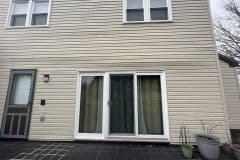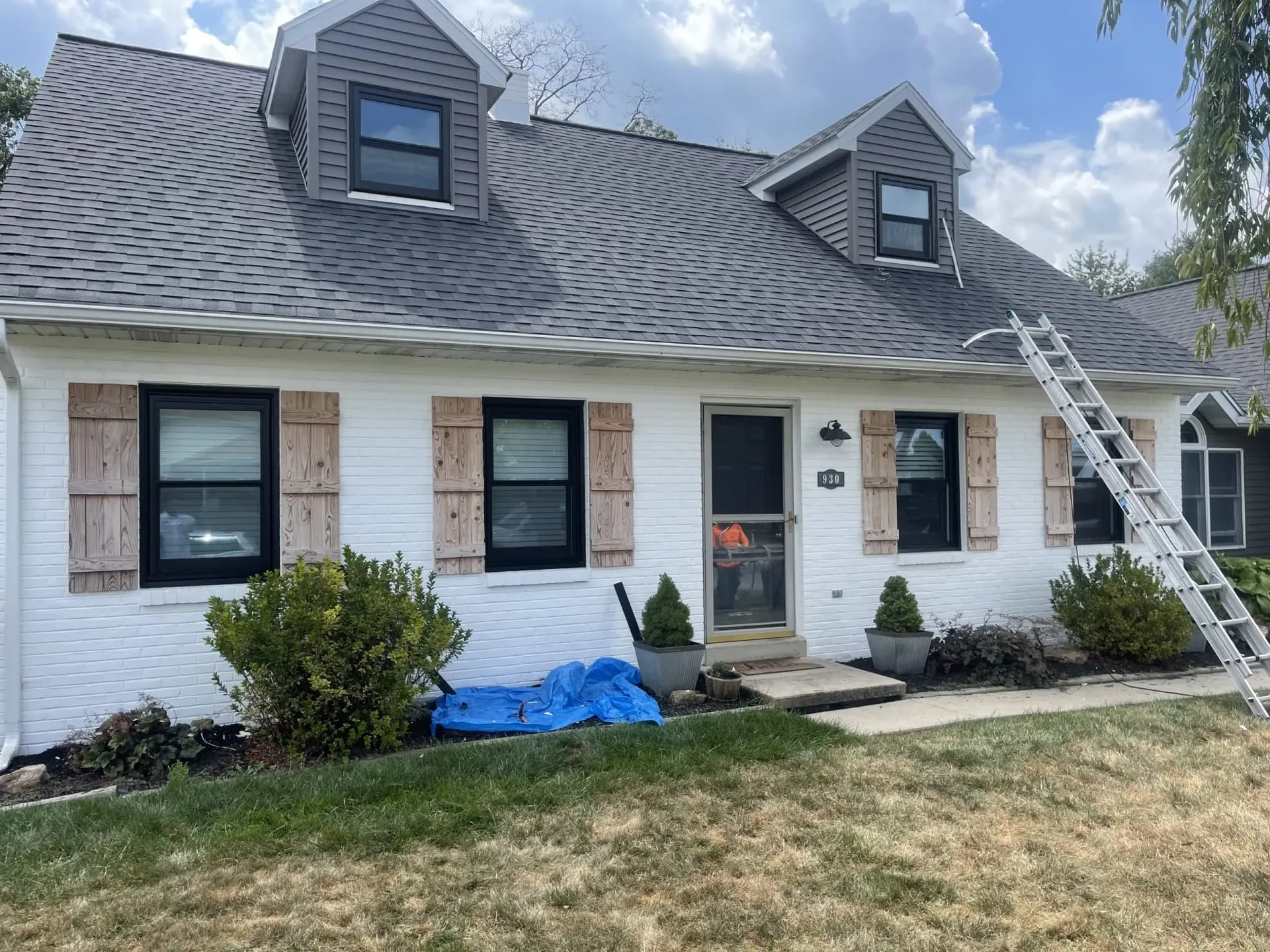Your Guide to Energy-Efficient Doors
Energy efficiency is crucial to any home improvement project. Modern home buyers love a home fitted with appliances and fixtures that reduce heat transfer between the home and the exterior, thereby reducing heating and cooling costs. Doors are often ignored in home improvements. Replacing a drafty door could save you from discomfort in colder months and reduce cooling expenses when it is warmer. With an increased focus on energy-efficiency, the market is full of options. Some doors are better than others at maintaining a constant indoor temperature. At Aspen Home Improvements, we’d love you to undertake projects that improve your home’s performance and increase indoor comfort. Today’s article will serve as your guide to energy-efficient doors.
Factors to Consider when Shopping for Energy-Efficient Doors
Choosing the right energy-efficient door for your home can be overwhelming, considering the wide variety of options they come in. These doors come in an assortment of designs, with different styling options, materials, and textures. When you are shopping for a new energy-efficient door, here are the top 5 things to look out for:
- Glazing- Doors with multiple panes of glass are more energy-efficient. These doors typically come with an air chamber that improves energy efficiency by acting as insulation. Some doors have a filler gas between the panes to improve efficiency further.
- Frame- Go for a door whose frame has a high insulation rating. The top three materials for energy-efficient door frames are Wood, Fiberglass, and Vinyl. Metal frames conduct the most heat into and out of your home, making them the least efficient.
- Location- Prevailing weather conditions determine the kind of doors that would be most effective at keeping your home comfortable and energy-efficient. Areas with harsh winds and high precipitation require stronger doors to prevent the formation of gaps that cause drafts.
- Exposure– the most energy-efficient doors have a Low-E (Low Emissivity) rating. These will protect areas of your home against direct heat from the sun, block UV rays from damaging your furniture and insulate your home from the cold.
- Installation- Ensure that you choose the proper contractor to install your doors. Faulty installation results in water leakage, drafts, and poor door operation. With proper installation, your doors will create a tight seal that makes your home energy-efficient.
How to Improve the Energy Efficiency of Your Existing Doors
There are several products that can help you minimize heat loss through your doors. If your doors are ill-fitting or don’t seal well, they become the greatest conduit for heat transfer. Below, we have listed products that can help you reduce the occurrence of drafts if your door was not properly installed, or is worn out from years of use.
- Wiper Seals– These are strips made of plastic or metal with brushes attached. When you close the door, the brush compresses, creating a seal. These usually work well at the bottom of doors or where there’s a gap between the door and the frame.
- Silicone sealant– this can be used to secure panes that have gaps but are not supposed to open.
- Compression strips– when your door closes against a frame, you can use this handy attachment to block drafts arising from the gap. The self-adhesive foam gives when compressed, so it will always occupy gaps in your door system.
- Hinged flaps- these are placed between the bottom of the door and the floor to ensure that there are no gaps during the opening and closing of the door.
- The double-door airlock– while this is more of a technique than a product, it still deserves to be mentioned. You can add a second door a few feet inside the original one, or build an entryway with an exterior-facing door. So long as no one opens the second door until they close the first one, you will reduce the amount of heat transfer during entry and exit.
How to Tell if your Door is Energy-Efficient
For the highest energy-saving capabilities, buy doors that have the ENERGY STAR certified and National Fenestration Rating Council (NFRC) labels.
If you install doors with an ENERGY STAR rating, you will use less energy and keep your indoor temperature constant, ensuring comfort.
The National Fenestration Rating Council developed a rating system based on the performance of doors and windows. An NFRC rating is the best way to establish the energy performance of your entire door and allows you to perform a side-by-side comparison between products.
If you have any more questions regarding energy-efficient doors, we’re always available to help you understand. If you are in Delaware, Pennsylvania, West Virginia, and Maryland, contact Aspen Home Improvements for your next door installation. Our friendly staff and qualified experts will be glad to make both door installation and repair easy for you.
Related Posts:
If your front door is looking a little worse for wear, it might be time to consider replacing it. Replacing your front door can not only improve the look of your home, but also make it more secure and energy efficient...
Have you ever considered replacing your old windows with new modern black windows? Black replacement windows have recently gained a high popularity and have become a common trend in many modern homes...
Your entry door is one of the first things that people see when they enter your home, yet it’s often overlooked when homeowners are making a list of what needs to be fixed up around the house...
Your front door is the first thing that guests see when they come to your home, and can also greatly impact your home’s energy efficiency, security, and visual aesthetic...
Get A Free Estimate Now!
Special Financing Available
Ready to Start Your Project?
Give Us a Call for a Free Consultation.
What Homeowners Say About Aspen
Very good working with this company. Product is good. Like family owned business… very friendly! Purchased a new sliding door and window.
Wonderful people to work with! In order to replace the door, they had to remove the original woodwork, but once it was in they put it back up so well that we can't see a difference. Everyone was great. The salesman, the technician that did the work and the person that did the follow up. I wouldn't hesitate to recommend them to anyone!
The experience was awesome. Luke, our sales person, was amazing, friendly and knowledgeable and willing to get the answers we needed. The install was easy. They communicated throughout the process. I would recommend Aspen to anyone.
Great window quality. Customer service has been good with taking care of a few minor issues. Nice little gift box when they come for a final review.
Very grateful that this company would tackle the siding on our vintage log cabin. The crew that did the work had weather challenges with several snow events, but the work is well done and we've had compliments as to how Nice our house looks. Thank you Aspen!
Aspen Recently Replaced Our Windows On Our 50 Year Old Home And They Turned Out Beautifully. Thank You Aspen
Friendly and hardworking installers. Very happy and would love to have Aspen come back to do more home projects.
Highly recommend Aspen! We had all 25 windows replaced from white to black and they turned out better than we imagined. Our house looks like a storybook house now. The new windows were the final touch on our total home renovation. Aspen did a phenomenal job!!
Excellent job. Excellent customer service. Would have to recommend for all situations. These guys rock!
Pleasant team from front to back, very professional, great products and timely installation. Special thanks to Breeze, Lisa, Wesley, Mike and Madison!
The Aspen team is responsive, quick, and professional. They set realistic timelines, expectations, and delivered on them. The quality and warranty are second to none.
Very professional company, with great workmanship ! Very responsive and competitive cost. Highly recommend their service!! Oh, they brought donuts and coffee! It was a great experience all around!
-544x459.png&w=3840&q=75)
-640x390.png&w=3840&q=75)

Aspen Home Improvements

Mon-Fri: 9AM-5PM
Sat: 9AM-1PM


